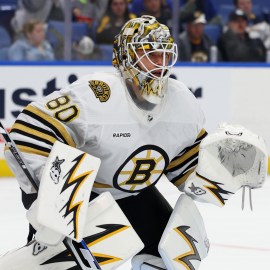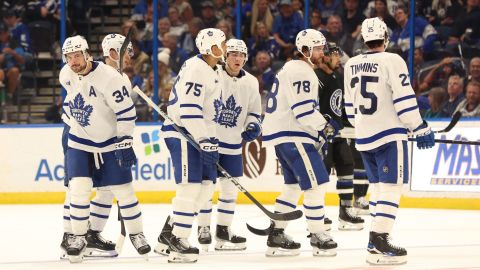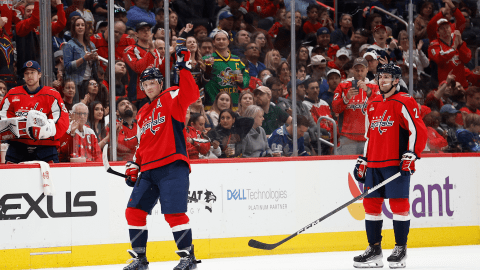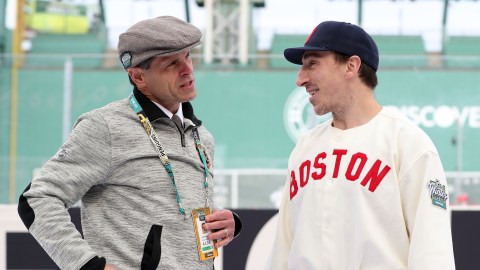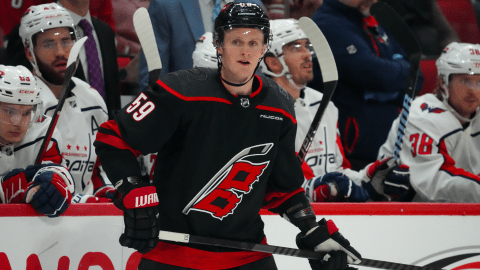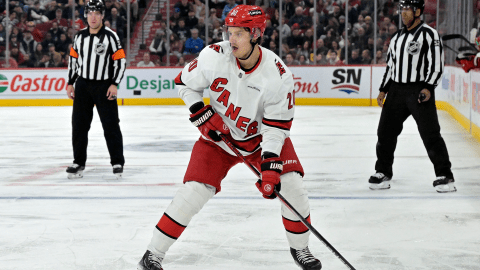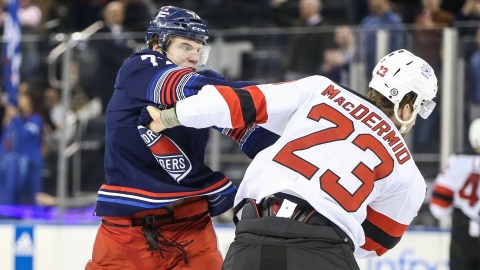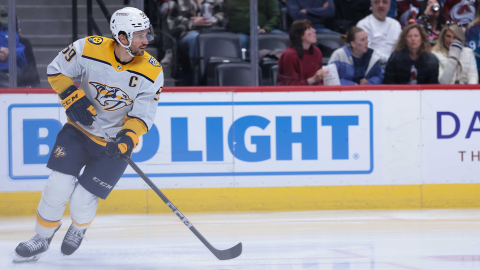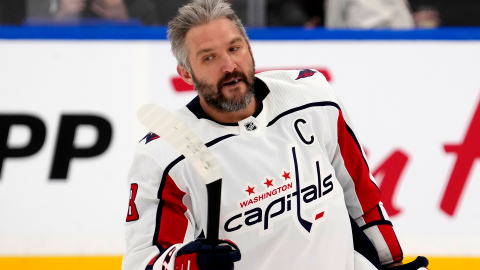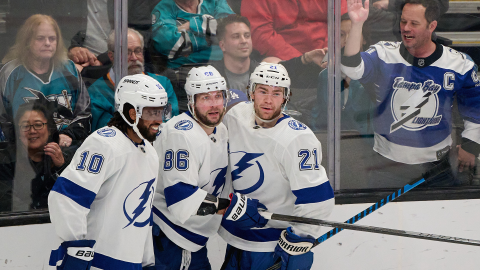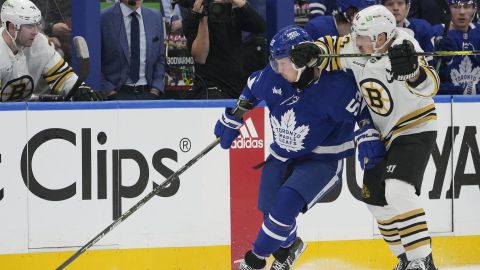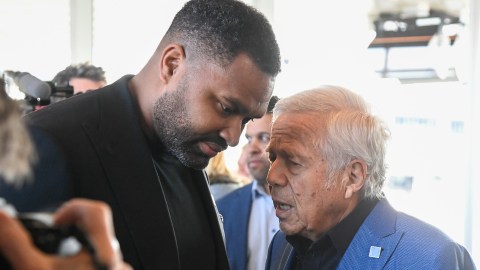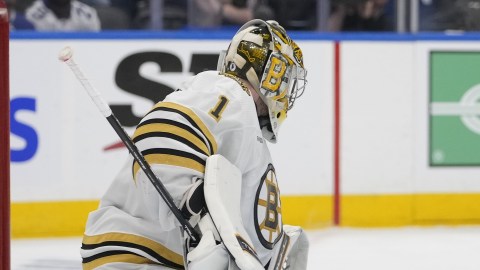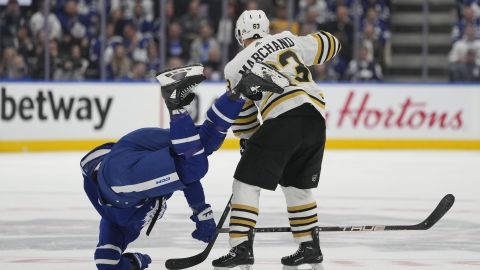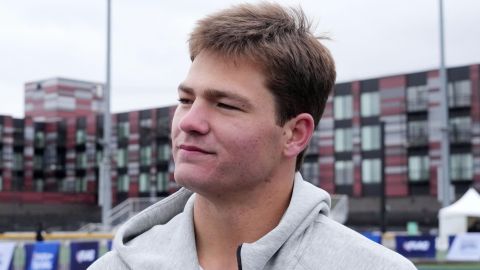The NHL’s general managers discussed and voted on the potential expansion of the coach’s challenge through video review at the annual three-day meeting that began on Monday.
The GMs proposed several minor rule changes and suggestions for the 2024-25 NHL season. Even though the GMs voted for the implementations, all the recommendations must pass the NHL’s competition committee and the league’s Board of Governors for final approval before being made official.
“The biggest thing is when you go to a game, and something will happen on the ice, and all the fans can see it was wrong, make sure that moment doesn’t happen and try to get it right so it’s not only fair for the players on the ice, but fairness for both teams and officiating,” Arizona Coyotes general manager Bill Armstrong said at the NHL General Managers meetings, according to NHL.com’s Dan Rosen. “I think we’re just trying to make the game better in small pieces. That’s the biggest thing for us.”
No Matchup Found
Click here to enter a different Sportradar ID.
Story continues below advertisement
The GMs want the coaches to be allowed to challenge delay of game and high-sticking minor penalties in a proposal to expand the coach’s challenge.
For a high stick infraction, the coach could challenge the call on the ice if they believe the stick did not belong to the team being penalized. If the player were struck with his own or a teammate’s stick the call would be overturned.
In the delay of game penalty for a puck shot over the glass, the penalty would come off the board if the video review shows the puck was deflected by the offensive team or hit the glass on its way out of play.
If the call on the ice stands in either circumstance, the offending team would be short-handed in a five-on-three situation and would only remove the penalty, not add one.
Story continues below advertisement
Along with the expanded coach’s challenge proposals, the GMs also discussed several tweaks to current rules, such as face-offs after icings, refusing to play the puck, accidentally dislodged nets, goalies removed for mandatory purposes and face-offs after a stoppage in play because a goalie’s mask comes off.
Face-offs After Icings
Currently, the attacking player is removed from the face-off on his first violation, whereas the defending player is given one warning before he is removed. The proposed change would allow the attacking player to receive one warning for a face-off violation and be removed from the face-off on the second infraction. This is to allow for equity after an icing.
Refusing to Play the Puck
The face-off for this play is currently contested in the zone where the puck is when the whistle blows. The proposed change would move the face-off to the neutral zone when a defending team refuses to play the puck in its zone after the attacking team played it with a hand pass or high stick.
Accidentally Dislodged Nets
Disallowing a team to make changes and giving the attacking team the right to choose which side of the ice it wants the face-off to take place after the defending goalie or skater accidentally causes the net to be dislodged. The current ban on player changes does not apply to the goalies accidentally dislodging the net.
Story continues below advertisement
Goalies Removed for Mandatory Purposes
Currently, the incoming goalie is not given time to warm up when a goalie is removed from the game by the concussion spotter. The proposed rule change would allow for the replacement goalie to have time to warm up.
Face-Offs After Stoppage in Play Because a Goalie’s Mask Comes Off
The proposed rule change would have the face-off take place in the goalie’s defensive zone. His team would not be permitted a line change, and the attacking team would be allowed to choose which side of the ice it wants the face-off on.
One change that will be effective immediately is if a player is sitting on the boards waiting for a line change, officials are instructed to apply the rule that already exists and penalize the player for unsportsmanlike conduct, according to The Athletic. Currently, the officials give the player a warning on his first offense and assess the penalty on the second infraction.
“I don’t think we’re going to have a stopwatch on it; it’s a discretionary call, and I think our guys are pretty good at applying judgment,” NHL director of officiating Stephen Walkom said, according to NHL.com. “In any situation like that, you want to let the coach and the team know, and that’s usually all we need to do.”
Story continues below advertisement
The GMs and Walkom also reviewed puck possession and what is considered offside when a player is entering the offensive zone.
The one exception to the rule is when skilled players have clear possession of the puck but their skates cross the blue line before the puck, according to Walkom.
Featured image via Jerome Miron/USA TODAY Sports Images
